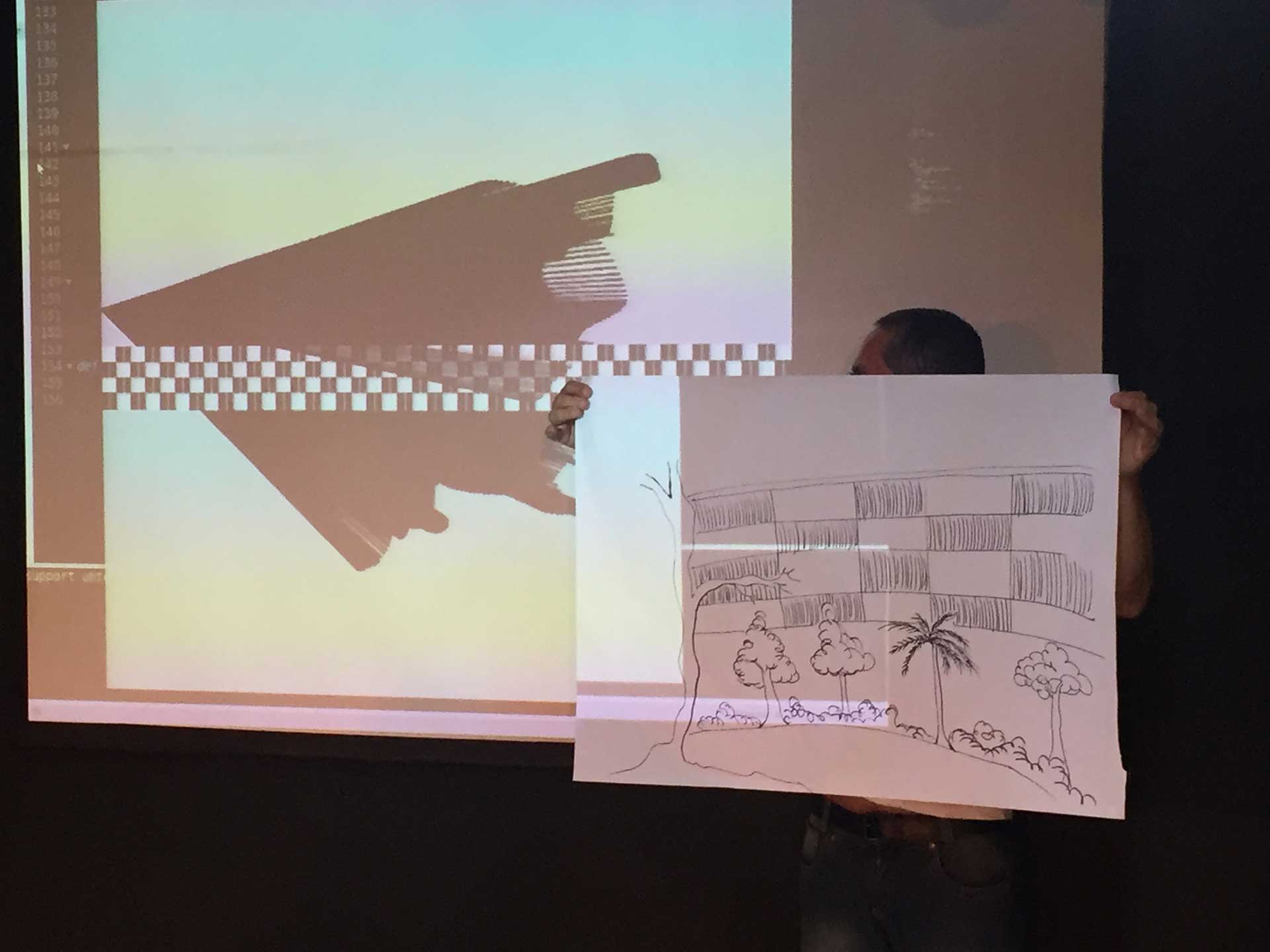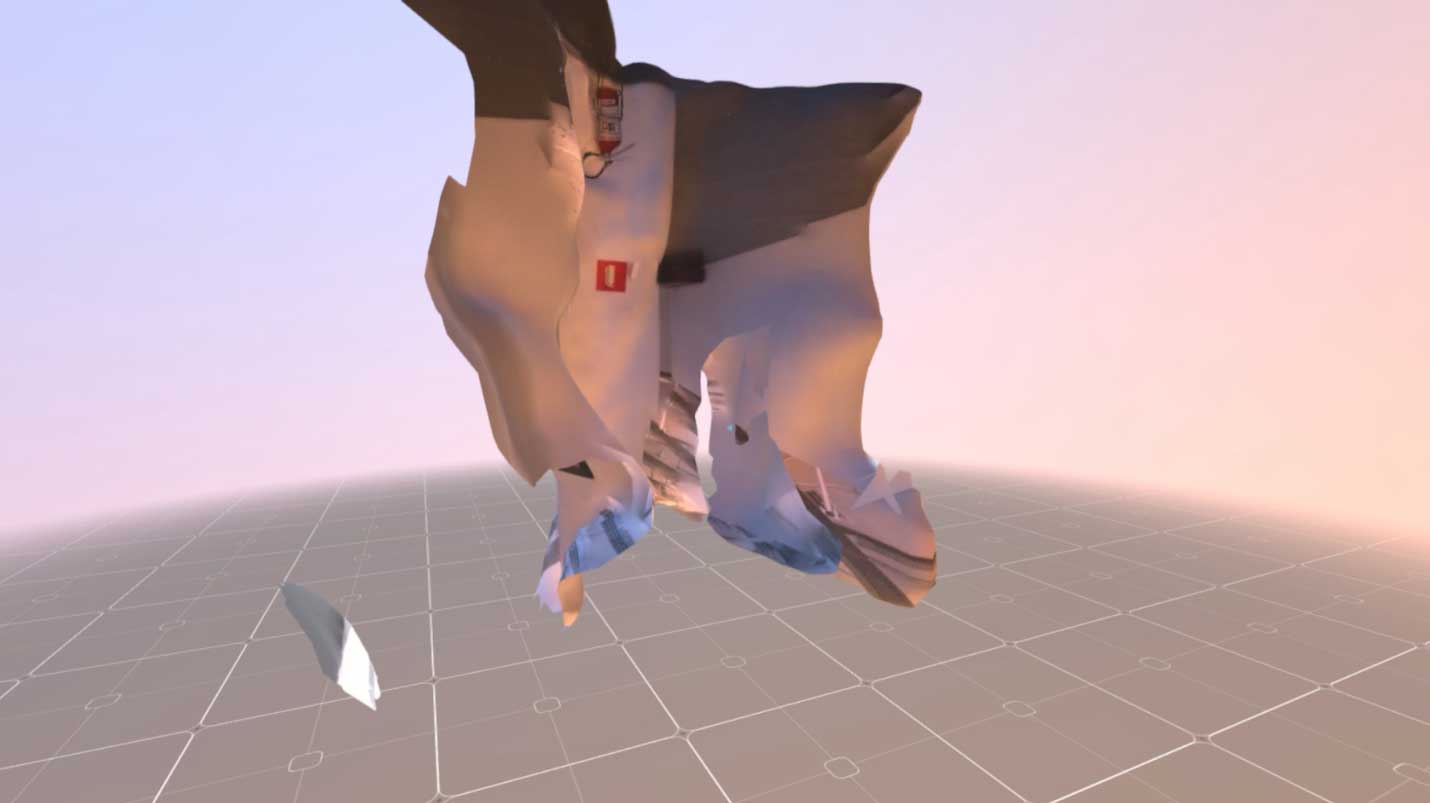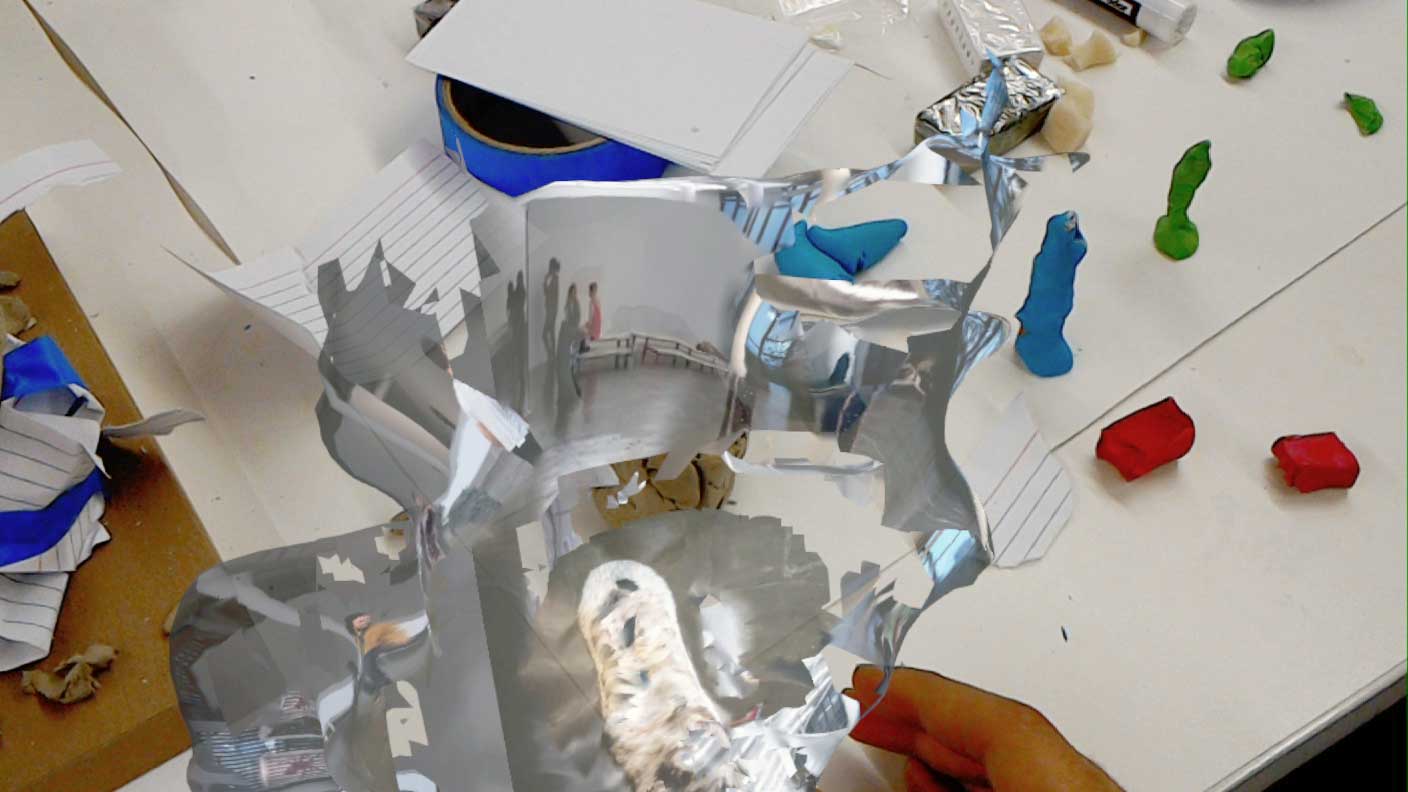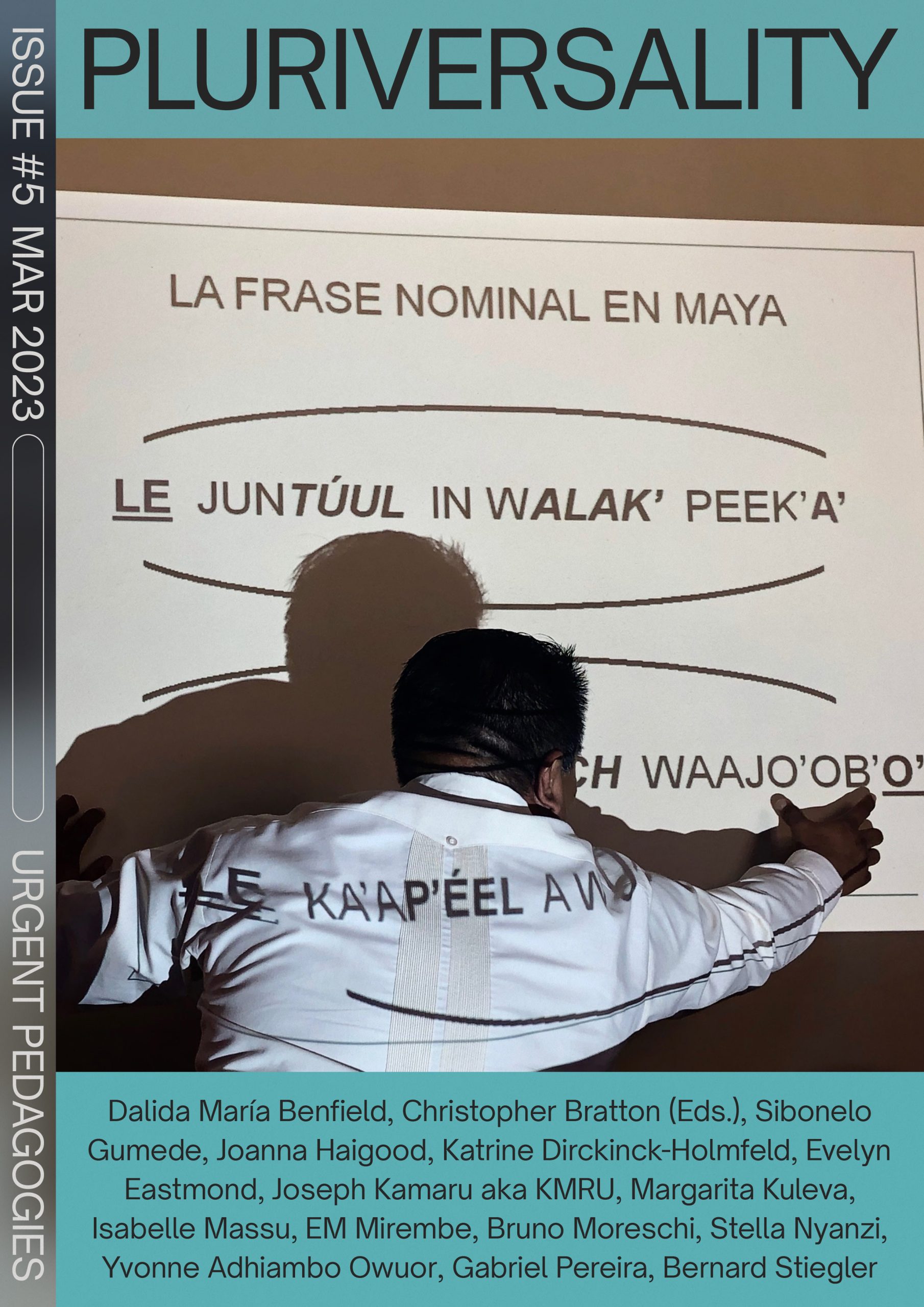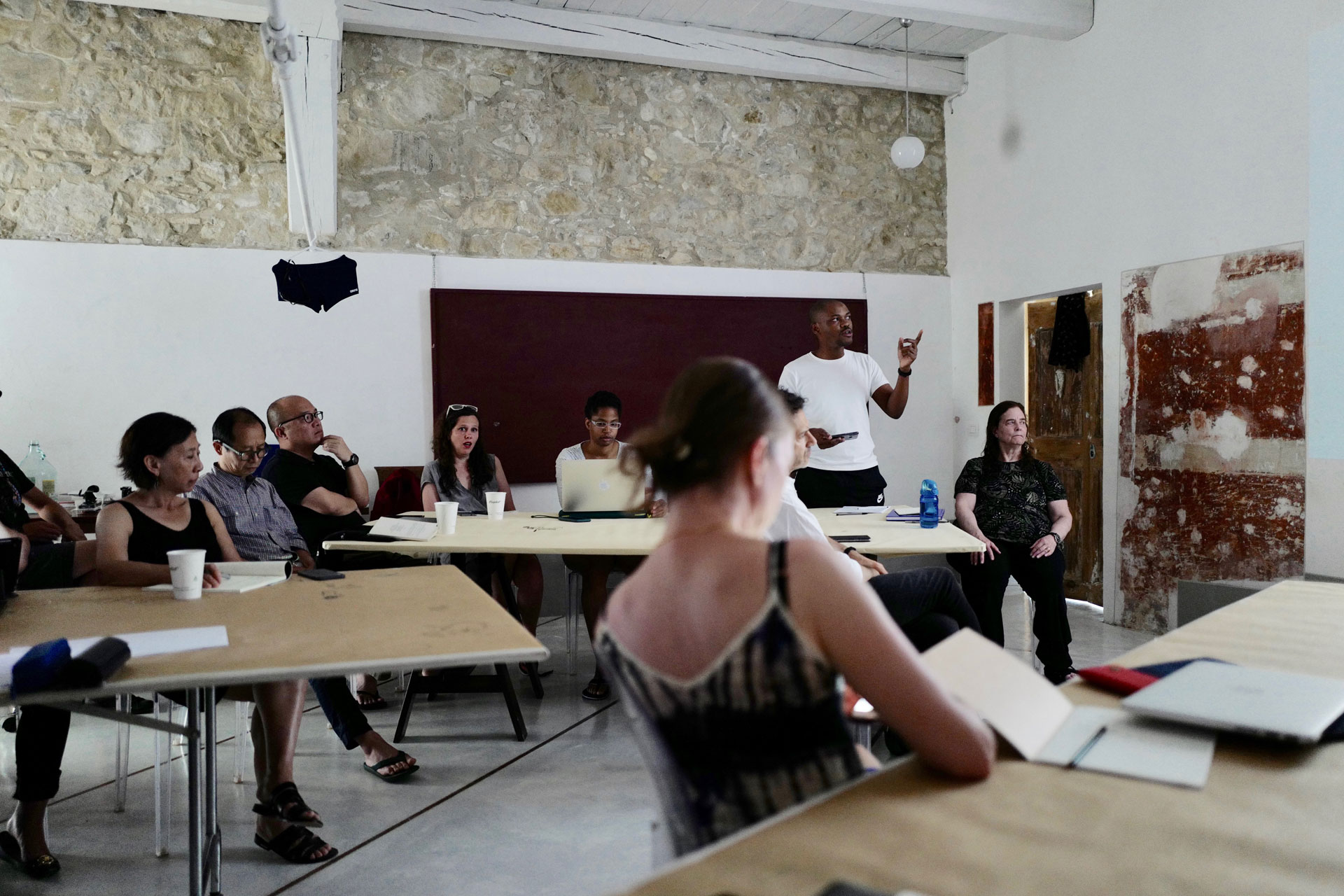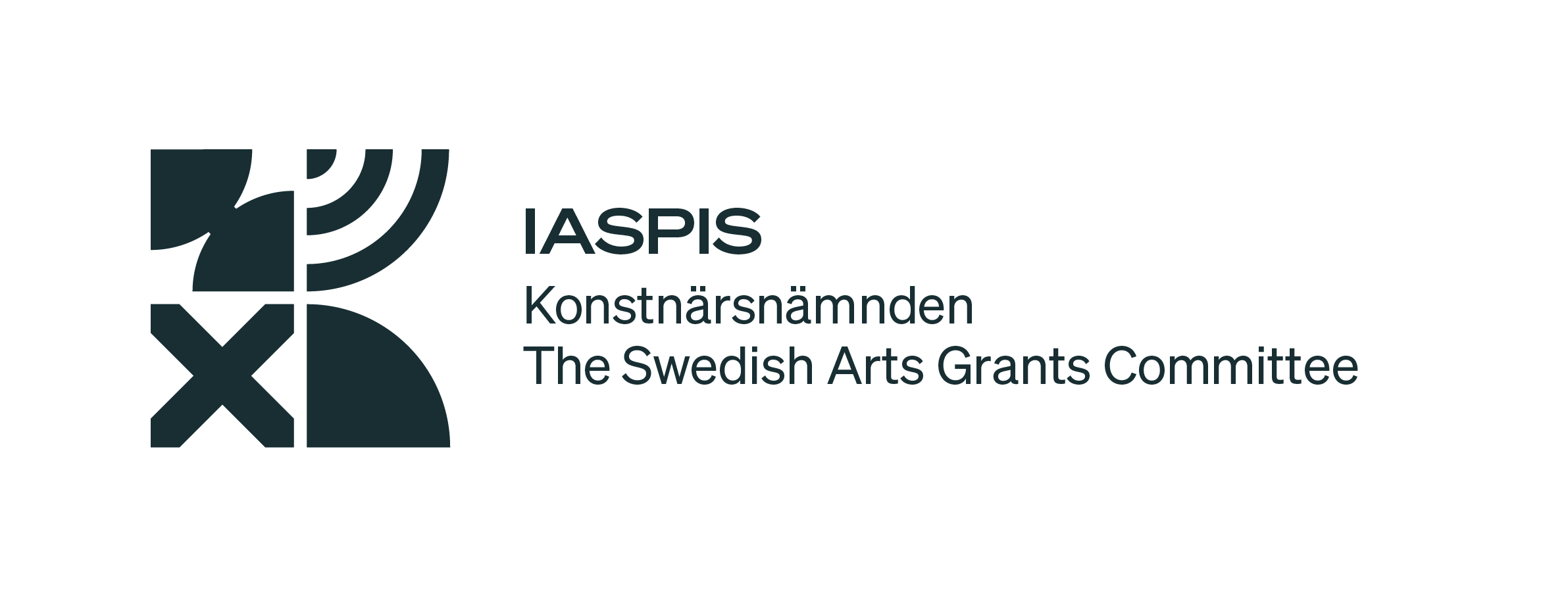Potentially liberatory glimpses of the 33rd São Paulo Biennial system
Dalida María Benfield, Christopher Bratton, Evelyn Eastmond, Bruno Moreschi, Gabriel Pereira
CATEGORY
Bruno Moreschi conducted a series of inter-related investigations under the title, Another 33rd Biennial, for his contribution to the 33rd São Paulo Biennial. Intending to create a platform for interrogating the Biennial as a signifying and social system, he carried out numerous actions that dwelled in its liminalities and illuminated its borders.
Amongst other interventions, he interviewed the cleaning, installation, and security staff of the Biennial about their interpretations of the artwork, and used AI to produce new “readings” of the exhibition, including the architecture. Two related actions involved the collaborative workshops, “São Paulo-Boston,” which occurred in Cambridge, Massachusetts, US; and “Vislumbres Potencialmente Libertadores no Sistema da 33ª Bienal de São Paulo,” at the Itaú Cultural, São Paulo, Brazil, 2018. In the essays included here, members of the collaborative group that carried out these workshops – Dalida María Benfield, Christopher Bratton, Evelyn Eastmond, and Gabriel Pereira, along with Moreschi – reflect on the trans-local learning process. The workshops framed and instigated collective transcriptions, translations, and mutations of the artworks and architectures of the 33rd Biennial while inscribing new relations of teaching and learning.
Underneath. External. Inside. The 33rd São Paulo Biennial and Bruno Moreschi’s project for it, Outra 33 Bienal (An Other 33rd Biennial) (2018), is a palimpsest, digital and otherwise, a phantom that exists only in peripheral vision. Focus and it disappears, but there it is, underneath, external, and inside of the biennial. It is a panoply of social relations and analogue and digital apparatuses. This includes Artificial Intelligence platforms scanning and categorizing the exhibition and its multiple facets, mostly mistakenly, confusing the works of art with other things, in effect mis-categorizing and un-curating the whole. Here, too, in this other version, are the voices of cleaning staff, carpenters, installers, electricians, movers, the assistants to curators and assistants to others. A graffiti collective assumes itself invited and provides a new slogan for what could be called the building’s frieze: “Doesn’t this person deserve recognition by the art world?” It is gone in less than 24 hours.
One evening a bus arrives full of people from all over the sprawling city of São Paulo. Some of those that step off are blindfolded by others. Those that are not blindfolded lead those that are, explaining everything that is being seen, both “art” and “non-art.” The blindfolded touch walls, ceilings, sculptures, signs, and as the groups fragment, they move slower still, holding onto one another. Over several hours, the murmuring, amplified by the complex spatialities of the Ciccillo Matarazzo Pavilion (1957), designed by Oscar Niemeyer in a frisson of modernization, creates its own space, defined by our sense of shared intimacies and pervasive tenderness. Finally, distributed around the space, we read aloud our biographical stories, written collectively the night before, and others respond with drawn interpretations and illustrations on the concrete floor. Two phases of engagement, then, marked this, the second of a three-night workshop, “Entreolhares – Vislumbres potencialmente libertadores no Sistema da 33a Bienal de São Paulo (Between Gazes – Potentially liberating glimpses into the system of the 33rd Bienniale of São Paulo)” held in tandem with Outra 33 Bienal (An Other 33rd Biennial). Co-organized by the Center for Arts, Design, and Social Research and the Itau Cultural Center, the workshop engaged a group of adult participants, including artists and art educators, in a reconsideration of the meanings of biennial. It enacted a series of readings of the exhibition that included not only the physical act of unseeing and mistranslation, but also the occupation and repurposing of the biennial site as a theatre for our stories. Finally, with all the other pieces of the Outra 33 Bienal (An Other 33rd Biennial), the workshop is also included in the archive, indistinguishable from and interchangeable with the official exhibition itself.
Dalida Maria Benfield and Christopher Bratton
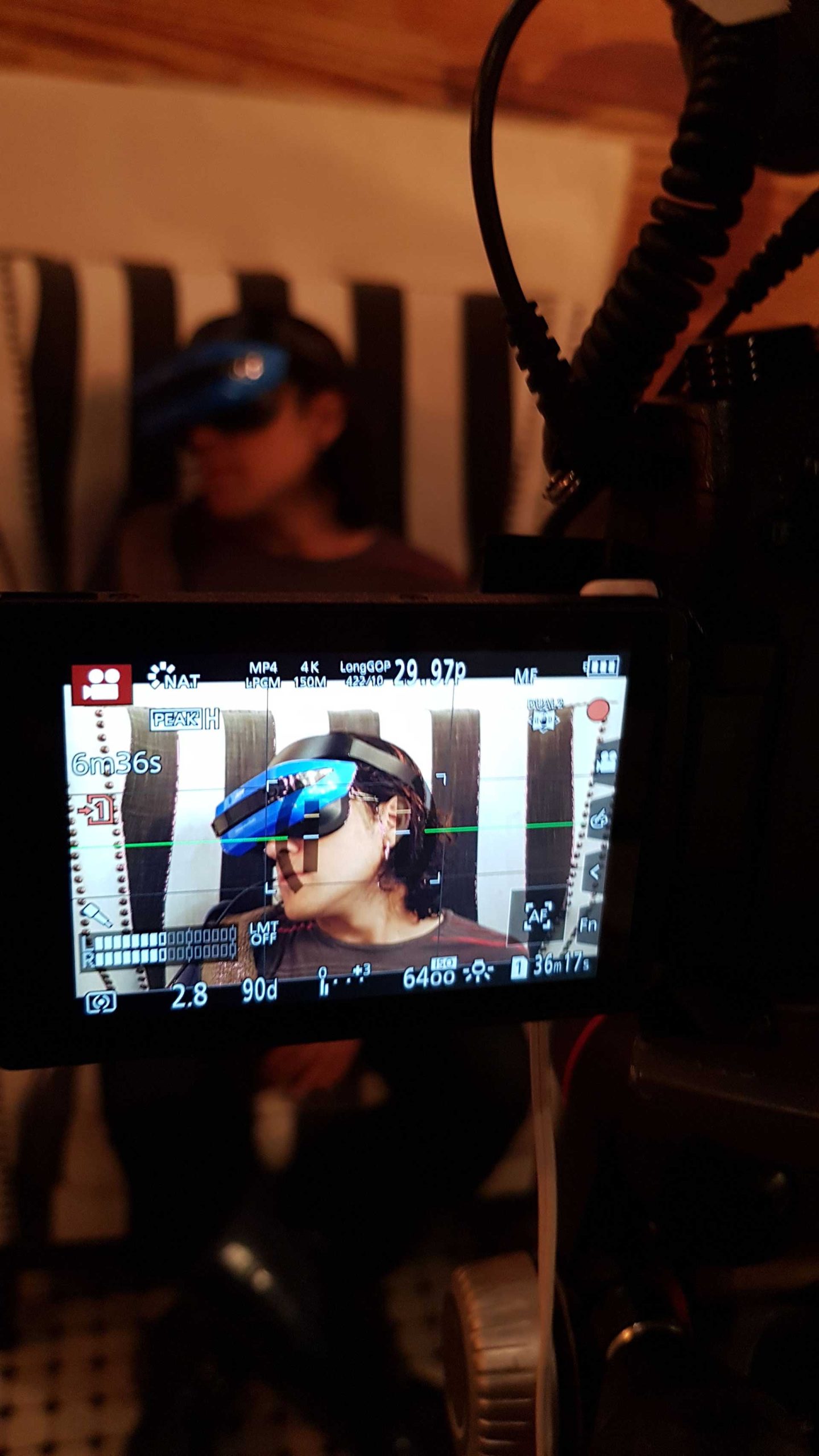
São Paulo/Boston, a workshop held as one action of Another 33rd São Paulo Biennial, Cambridge, MA, US, 2018. Image courtesy CAD+SR
The core idea of the Another 33rd São Paulo Biennial project was expanding the exhibition to considering, among other things: What do non-experts have to say about this exhibition? What reverberates away from the official discourse and the walls of its exhibition space? The idea of expanding the exhibition to Boston naturally emerged from the connection with CAD+SR, as well as the fact that Boston is home to the largest Brazilian community in the United States. How did these people relate to this exhibition and its artworks, which were so distanced (and at the same time close) to them? To connect different people to these works, we held a series of workshops in a Brazilian cafe in Cambridge and the MIT Media Lab.
In these events, we played around with digital mediations of the exhibition in different ways. For example, we asked participants to enter a Virtual Reality space with works from the exhibition. As they went through this space, they described it to other participants, who asked questions to better understand and visualize this space. “What do you see? What does it remind you of? How does it make you feel?” In this mediating process, the exhibition and its works became suffused with new layers of place and affect.
In another instance, we asked participants to experiment with different materials to create new, alternative spaces from the images of the exhibition. There, once again, we saw the potential of engaging with emergent meanings of individual works of art, how they exist in relation to each other and their spaces, mixed together, how they gain new meanings. Taken from their intended locations and walls, they generated new questions, new thoughts, and feelings.
Gabriel Pereira
Another 33rd Biennial, a project alongside the 33rd Bienal de São Paulo – Affective Affinities, provided a chance to push the boundaries of what an art exhibition means spatially, geographically and conceptually. Using nascent virtual reality (VR) and augmented reality (AR) technologies, we captured three-dimensional scans of the exhibition rooms, spaces and artefacts of the biennial in São Paulo, and re-formulated, re-oriented and re-distributed them through networked web platforms and graphically immersive headsets. In some cases, the reformulations provided new perspectives and sight-lines into the biennial’s pre-determined exhibit layouts. In other cases, the captured scans were completely re-immersed into wholly new contexts – including even on other continents – where different geographies, demographics and social vocabularies added new layers of meaning.
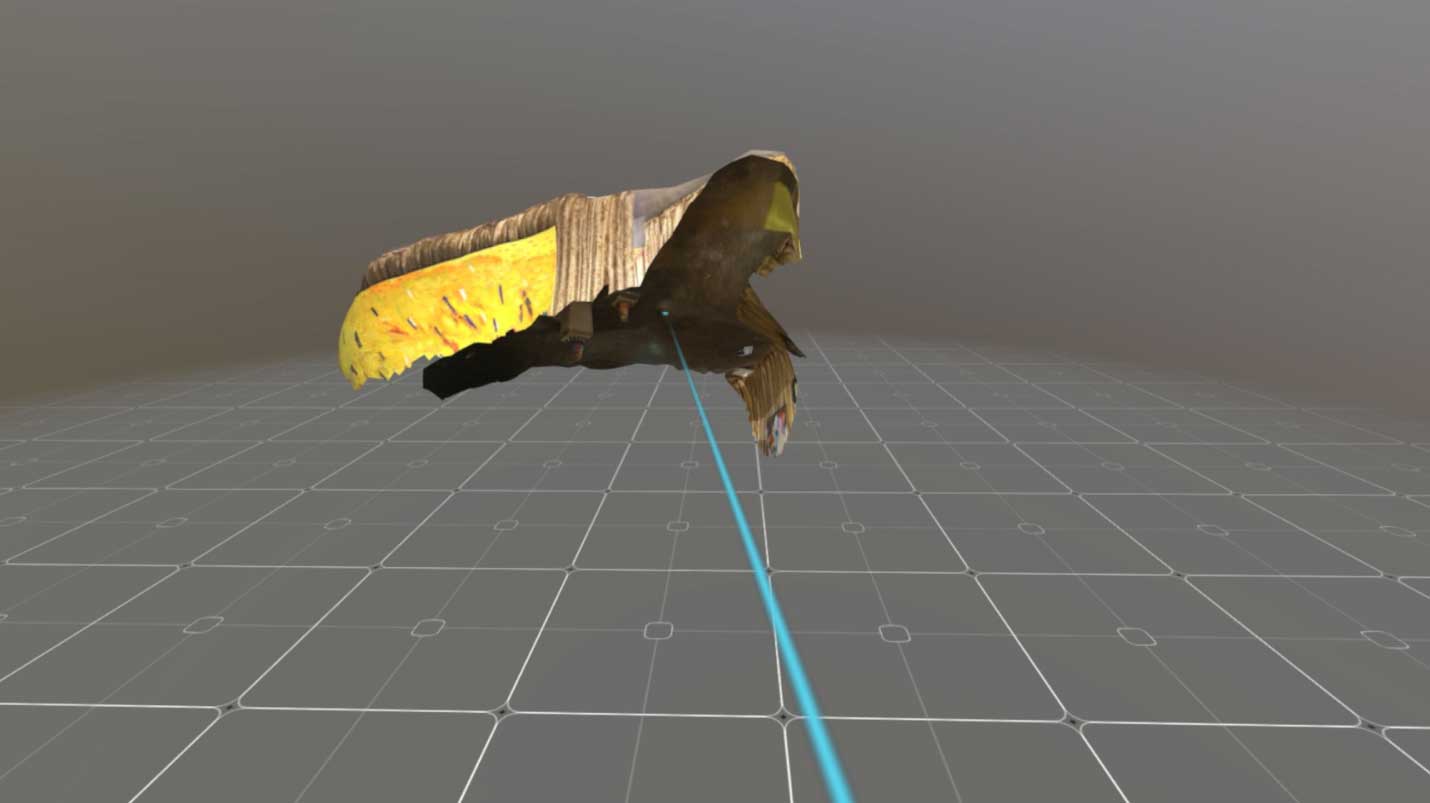
3D Scans of the 33rd Bienal de São Paulo as VR Artefacts, for São Paulo/Boston, a workshop held as one action of Another 33rd São Paulo Biennial, Cambridge, MA, US, 2018. Image courtesy Evelyn Eastmond
This “embodied dispersion” of the spaces and artefacts from the biennial gave a glimpse of the potential of spatial technologies to translate embodied media and their contexts across impossible distances. Since the completion of this project, VR and AR technologies have become mainstays in the global technology market, rebranded now as a kind of “metaverse”. While the metaverse may evolve in its definition to include all networked social technologies and their scope – from financial currencies to immersive social networks and everything in between – the unique ability to capture, share and re-experience embodied sensations and knowledges remains critical, and sensitive.
This spatial technology portion of the Another 33rd Biennial shows how both affinities and affects can be critiqued and re-experienced, hopefully providing a touchpoint for the future of spatial media theory and practice.
Evelyn Eastmond
In addition to the official discourse, there are always other possible understandings of an art exhibition. Seeking, highlighting and helping to build these others, which are many others, was my initial intention when coordinating the Another 33rd São Paulo Biennial, a project that was part of the 2018 edition of what is one of the largest biennials in the world. The search for unrecognized ways of understanding would be impossible without fully opening up my project to a network of colleagues who have been helping me build projects like this for years. My artistic trajectory is also this network and it is important that this is very well registered. For almost three months, we created alternative ways of understanding the exhibition such as image analysis of the Bienal by Artificial Intelligences; audio guide tracks with comments from employees of the institution; records of public reactions etc.
Here, I particularly highlight a two-stage workshop that I carried out with Dalida Benfield, Christopher Bratton, Bernardo Fontes, Gabriel Pereira, Evelyn Eastmond, and Nina Bamberg. First, a set of images, videos, and texts about the 33rd Biennial was shared in different meetings with Brazilian immigrants in Boston. The idea was to enlarge the meanings of the Biennial using its records as affective signs to connect people with their memories of their country of origin. Then, in São Paulo, we worked for three days with a diverse audience interested in building radical approaches to the exhibition. Based on 3D modeling that does not aim to be a faithful copy of the works exhibited there, we somehow redefine the boundaries between artistic intention and public perception. Also, in an action that still fills me with fond memories, we made a blind visit to the exhibition space at night, with the Biennale closed. In this new process of living and understanding the institutional space and its barely apparent elements (air, sound, etc.), we sometimes explored the space blindfolded while being guided by others. Sometimes, we were the guides.
The group of about 30 people went in and built a biennial that only existed for perhaps a few hours, but that was enough to turn into valuable material for the project’s expanded archive. It is interesting to note that in a process without human eyes like this, many things still remain and grow stronger. I remember how potent it was to trust each other while walking in the total darkness of that gigantic Biennale. And also from the moment we decided to draw on the floor of the space, each subgroup in a corner, communicating with lines, curves, abstractions and… screams. To me, these screams seemed to contain genuine joy. I still think about them today. Would the joy come from an audience that has finally emancipated itself? I sincerely believe so.
Bruno Moreschi
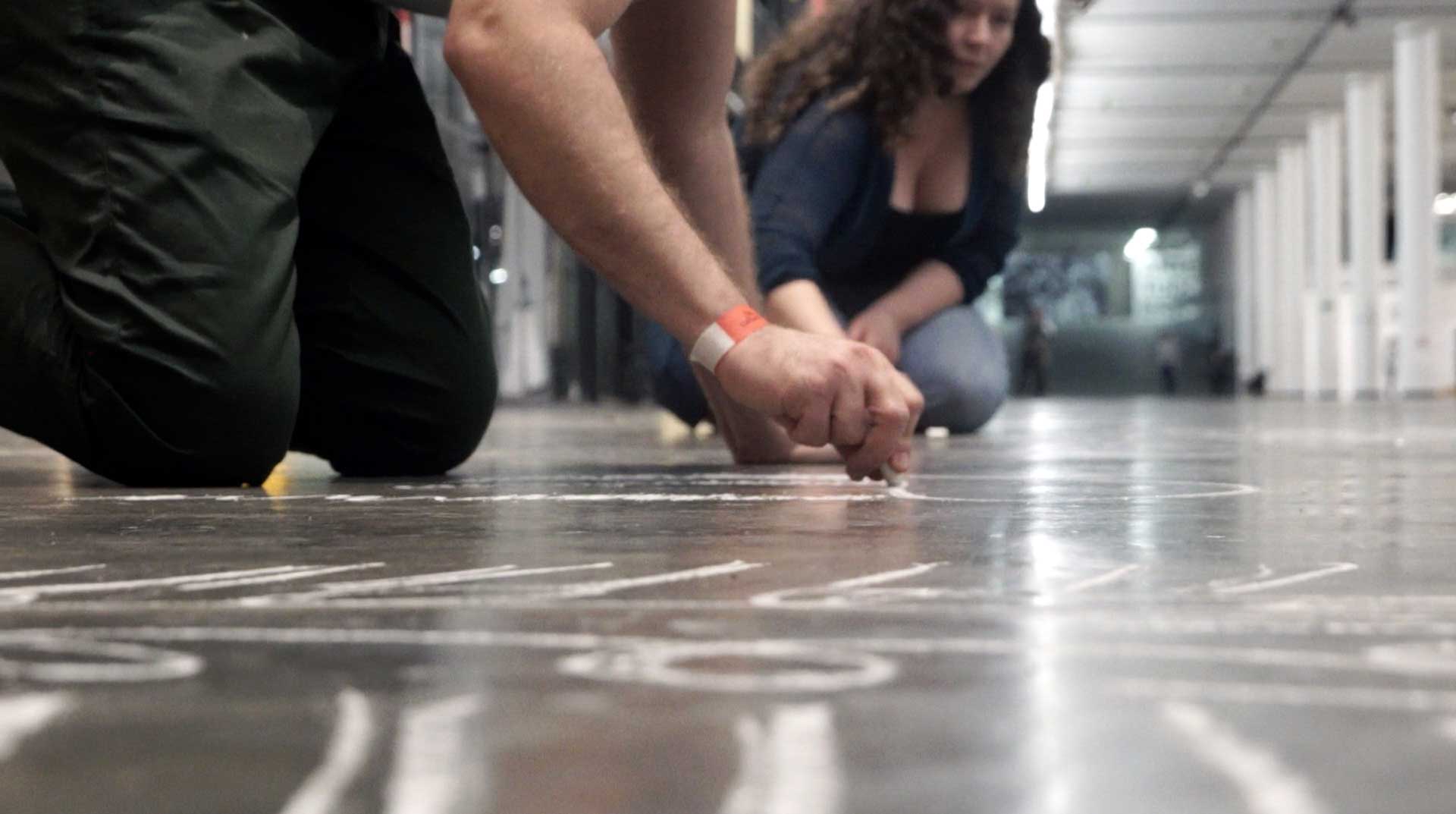
Vislumbres Potencialmente Libertadores no Sistema da 33ª Bienal de São Paulo, workshop held at Itaú Cultural and the 33rd São Paulo Biennial. Photo: Christopher Bratton.
The texts by Eastmond, Moreschi, and Pereira have been commissioned and written uniquely for Urgent Pedagogies. The text by Benfield/Bratton is excerpted from Pedagogics in the Underside of Modernity, forthcoming in The Routledge Handbook of Decolonizing Arts, Design, and Craft Education, Manisha Sharma and Amanda Alexander, eds., 2023.
Potentially liberatory glimpses of the 33rd São Paulo Biennial system is part of Urgent Pedagogies Issue#5: Pluraversality
are artists and researchers living between Helsinki and Boston. Since 2017, they are co-founders of the Center for Arts, Design, and Social Research, a poly-centric laboratory for research and practice focused on emancipatory and decolonial pedagogies. With partners in Brazil, Denmark, Finland, Italy, Kenya, Mexico, South Africa, and the UK; and a group of Senior Researchers and Research Fellows, they have co-organized research convenings, exhibitions, workshops, and publications. Benfield works on decolonial aesthetics and has an MFA in moving image practices from the School of the Art Institute of Chicago, and a Ph.D. in Comparative Ethnic Studies with Designated Emphasis in Women, Gender, and Sexuality, University of California-Berkeley. Bratton is an artist, filmmaker, and education activist.
is a Product Design Prototyper at Meta developing strategy and exploring interfaces and applications for Virtual Reality (VR), Mixed Realtiy (MR) and Augmented Reality (AR) headsets. Before that she worked as a Senior Design Researcher in the Office of the CTO at Microsoft helping drive company alignment and evaluating product market fit for VR and AR. She has previously worked as an artist, researcher and professor at the Rhode Island School of Design and the MIT Media Lab and has held residencies at the Banff Centre for Arts and Creativity, the Center for Arts, Design, and Social Research and at the Gushul Studio at the University of Lethbridge.
is a researcher, visual artist, and post-doctoral fellow at the Faculty of Architecture and Urbanism at the University of São Paulo (FAUUSP). He holds a Ph.D. of Arts at the State University of Campinas (Unicamp), with an exchange at the University of Arts of Helsinki (Kuva Art Academy). He is currently a Senior Researcher at the Center for Arts, Design, and Social Research (CAD+SR) and member of the Decay without mourning project: future thinking heritage practices.
is an Independent Research Fund Denmark International Postdoc, based as a Visiting Fellow at the London School of Economics and Political Science (UK). His research focuses on critical studies of data, algorithms, and digital infrastructures, particularly those of computer vision and algorithmic surveillance. Projects with Gabriel have been exhibited in venues such as the 33rd Sao Paulo Art Biennial, the Van Abbemuseum, IDFA DocLab, and Itaú Cultural. He was a CAD+SR Research Fellow, 2017-2019, and Researcher in Residence, 2020-2021.
An Other 33rd Biennial website: https://outra33.bienal.org.br/en/
A Simple VR Re-layout of the 33rd Bienial de São Paulo as a Spatial Web-based Catalog: https://33bienal.glitch.me
Gabriel Pereira’s website: https://www.gabrielpereira.net/
Bruno Moreschi’s website: https://brunomoreschi.com/
